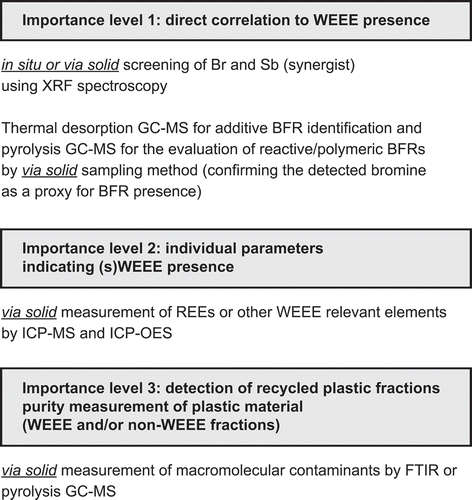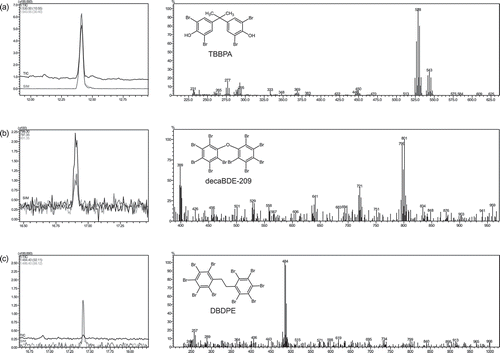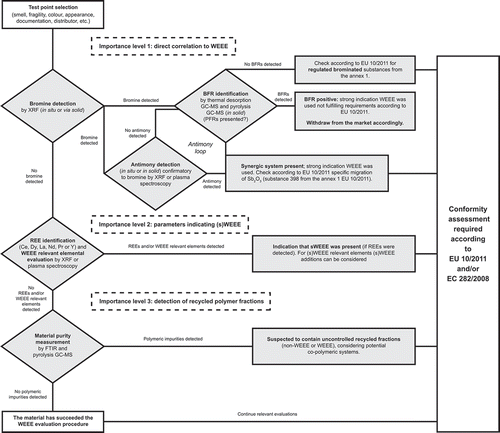Figures & data
Table 1. Overview of THE available analytical methods for the quantification of selected parameters for waste electric and electronic equipment (WEEE) evaluation in polymer matrices.
Figure 1. Recommended stepwise screening set-up for the evaluation of waste electric and electronic equipment (WEEE) in polymeric matrices using associated importance levels.

Figure 2. Fast automated full-scan single-ion monitoring technique (FASST) data obtained by thermal desorption GC-MS from a black thermocup cover (sliding stopper) purchased on the European market.

Figure 3. Generic procedure for the evaluation of waste electric and electronic equipment (WEEE) in plastic food-contact materials (FCMs), including an antimony (Sb) loop for the synergetic confirmation, taking into consider principles of Regulation (EU) 10/2011 (plastic FCMs) and Regulation (EC) 282/2008 (recycled plastic FCMs).

